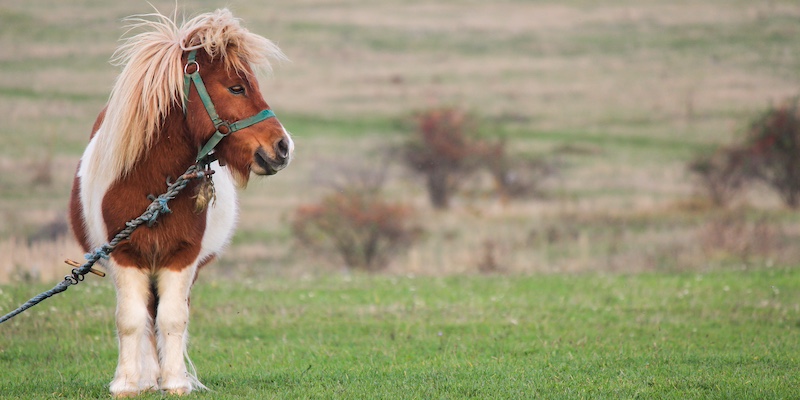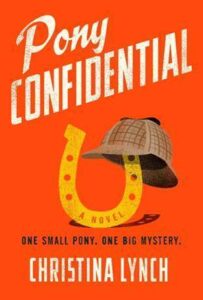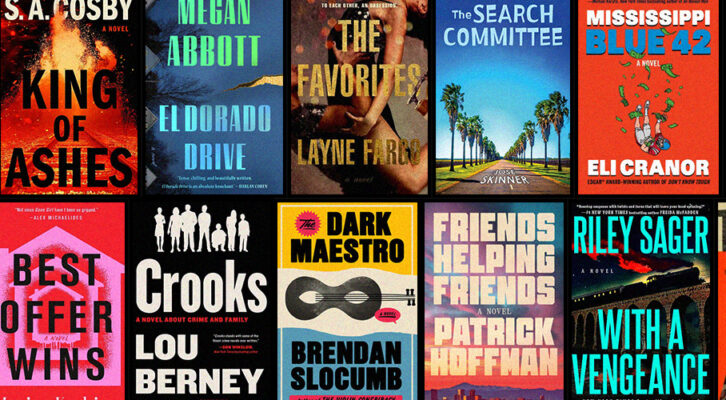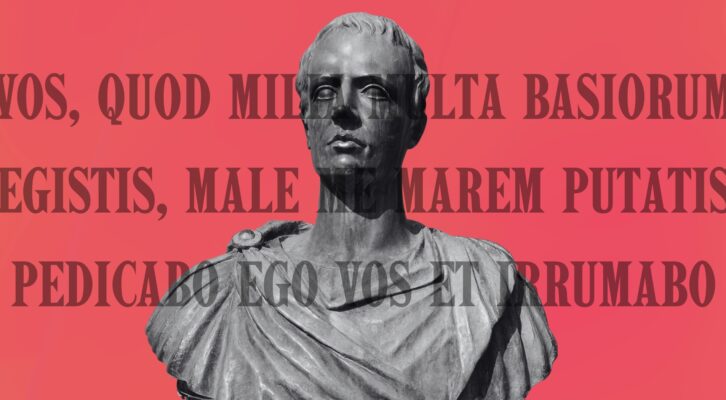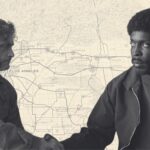I have a friend who, like me, is a novelist who has metamorphosed a bit as a result of creative impulses and market demands. She read fifty pages of an early draft of Pony Confidential when it was a novella called Christmas Pony that had no murder plot. Recently she reached out to ask me to explain how the darling little pony tale she read ended up next to slasher stories on Amazon’s list of “Must Read Crime Fiction of Fall 2024.”
Throw another log on the fire and pour yourself a glass of wine, because the odyssey of Pony Confidential is as complicated as the odyssey of its pony narrator and The Odyssey that inspired it…
Way back in the poignantly calm autumn of 2019 I was teaching World Literature for the first time. I had struggled to create a reading list that covered the required three thousand years and two-hundred-and-fifty-plus countries (!). I put The Odyssey right after Gilgamesh and before The Ramayana. I hadn’t read Homer in decades, so I’d spent the previous summer refreshing my memory with the Fagles edition and an audio version. I was struck by how delightful it was—funny, suspenseful, moving, gorgeously poetic, and a real page turner. The students had the same reaction—they could relate to Odysseus, stranded with the beautiful Calypso but longing for Penelope, and teenage Telemachus, trying to be the man of the house while his father was away for years on end, and Penelope, trying to keep her house together as a single mom. We were all intrigued by the non-chronological structure, the shifts in POV, and the engaging cast of characters.
That same semester I began a script for a Christmas movie about a pony that morphed into a novel because my book agent got excited about the premise. At a September writers workshop the usually circumspect group had begged for more “pony pages.” The voice came so easily to me that I was suspicious—this can’t actually be good, I told myself. But I had spent a lifetime with horses and ponies, and I own a pony (okay, today I own two ponies). I was all too aware of how ponies manipulate humans to get what they want—usually food. They are hilarious creatures, all Freudian id. How was it there had never been a book for adults about a pony, I wondered, when they feature so greatly in our childhood imaginations? But what could this pony book be?
Cue the pandemic, when I shifted to teaching entirely online and my live backyard pony became my primary workout buddy/confidante. Her moods fed the writing project, and I now had a voice and a situation—a cranky pony that had been passed around too many times and was fed up with humans. And then I thought of Odysseus—the soldier who got lost for ten years on his way back to Penelope from the Trojan War. Couldn’t the same thing happen to the pony, who was trying to find the one little girl he really loved? I was off and running—I borrowed Homer’s weird chronology of beginning in medias res and the hero recounting what had happened in flashback. I borrowed the escape from the Cyclops, the idea of Calypso’s island (a place where all physical needs are met but leaves the hero filled with longing), the cold beauty of Helen of Troy and her magic potions, a storm that blows our hero off course, and more, setting them all in present day America and using them to reflect on (read: satirize) our cultural obsessions. Any time I was stuck on what should happen next, I picked up The Odyssey and said, “Speak, Muse.”
When I was finished, the novella was about 140 pages and the pony met Argo’s sad fate. “Ummmmmm….” said my book agent.
“I’ll self-publish it,” I said, still certain no one was going to buy the story of a pony hero.
“Give me a few months,” she said. “I know I can sell this.”
But it was dark, short, and way out of any known genre. Editors were entertained but had no idea how to sell it to their marketing teams.
A couple of years later, I said, “Let’s give up and I’ll self-publish it and give it to people as Christmas gifts.”
“Give me two more weeks,” she said.
Two weeks later, she called and said, “I have a great buyer, but they want you to turn it into a full-length mystery novel.”
I laughed out loud and said no thanks. I had no desire to revisit the pony’s world at that moment. Also, we were having about a decade’s worth of rain in the span of a few weeks and I was preoccupied with whether my house was going to survive.
Almost immediately after I hung up, a spot appeared on the bedroom ceiling. “Mold,” said my contractor. “You need a new roof.”
Sing, Muse, of a pony tossed on the storm of life, trying to get home to his one true love, except first he has to solve a… murder?
When I rolled up my sleeves and dived back into the pony’s story, I was as enchanted as a Siren’s victims. It made me laugh out loud, as if I had not written it myself. But how could I insert a mystery without losing the delicate charm of what it was?
I rewrote that damn thing five times from page one. Five times at least. I may be blocking out some drafts. For a year I gave up vacations, including a trip with my pony. I gave up dinners and weekends, and friends and family despaired of ever seeing me again.
I knew from my dozen years writing television that murder mysteries are hard to plot, and they are always planned out before you begin writing. For good reason, I was finding out.
But I didn’t give up. Yes, I had a roof to pay for, and soon a failing septic system as well (life in the country), but that wasn’t what kept me going back to the drawing board over and over and over, re-outlining what had sprawled to a four-hundred-page novel starring a detective who had hooves instead of opposable thumbs. I loved the challenge. I loved the richness of the story that was coming to light. I loved the magic but also the realism of the world I was building, where the plight of animals was mirrored by those wrongly imprisoned in our problematic justice system. I was now Odysseus, and also the pony, finding my way through labyrinths and underworlds, hitting dead ends of plot, trying to make sense of the chaotic landscape. I did endless research and made charts and index cards and timelines. Having to revisit the story over and over made me look long and hard at how to reinforce theme through story, how to heighten and clarify emotional arcs, what characters were doing for the story, how dominos could fall more resoundingly. Every line had to serve the story and entertain the reader by making them laugh or cry or think. There was a draft set at a dude ranch out west, another draft about people who show chickens at fairs, and a draft that involved a family of California farmworkers. There was a draft where a UPS driver played a huge role, and a draft where we hardly got to know Penny, focusing instead on a young attorney in training. There were a lot of dead bodies along the way, a lot of murder weapons, and a lot of red herrings. One wintry night on an island where I was holed up with some writer friends, one of them landed on the perfect title: Pony Confidential. Now I had a character and a title, but the story still wasn’t working. Back to the drawing board, again.
With poetic timing, while my editor was out on leave giving birth to a human child, her wonderful assistant acted as the midwife through the last contractions and birth of the final draft of Pony Confidential. Reading it now, I think “how come I couldn’t just write this the first time? It’s so obvious how the story needed to go.” Why don’t books spring from our heads fully formed, like Athena from Zeus’s cranium? Except that’s not how writing novels works, is it? You have to explore all the other possibilities before you can find the one that clicks into place and feels right.
You have to go on the odyssey to find your way home.
***

